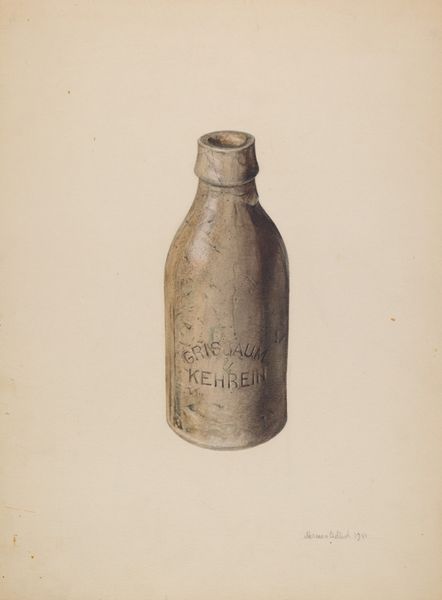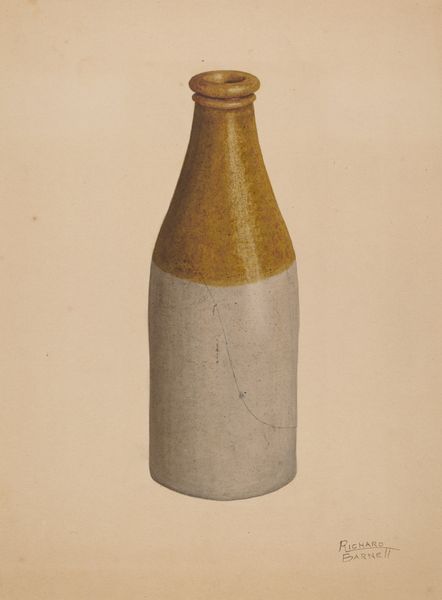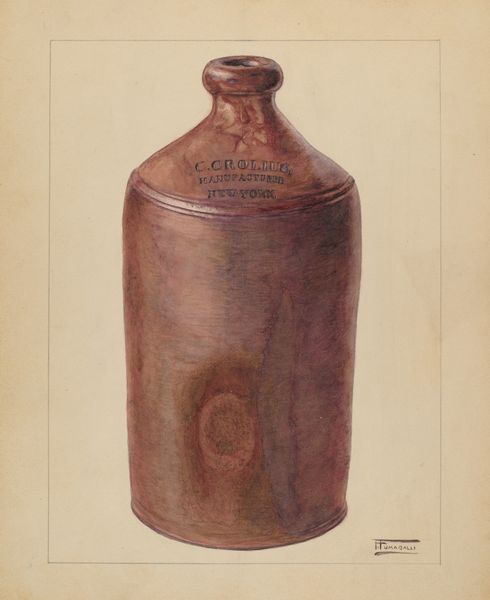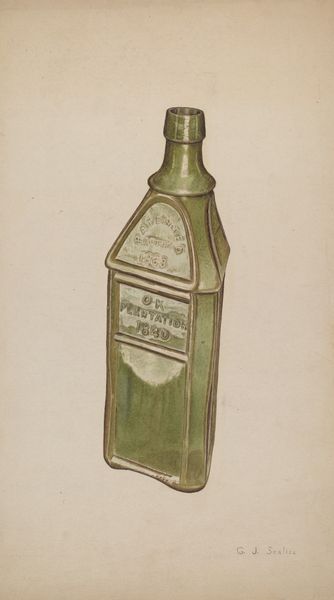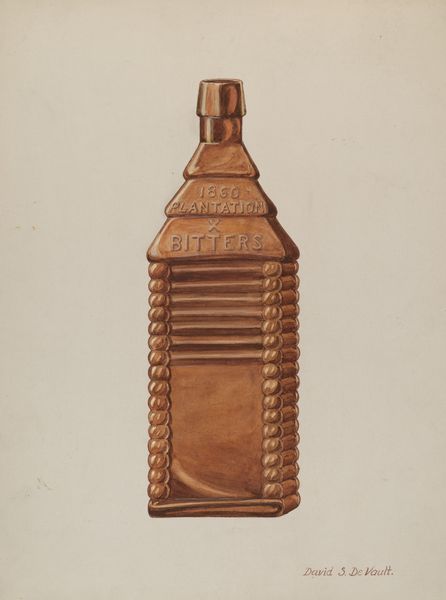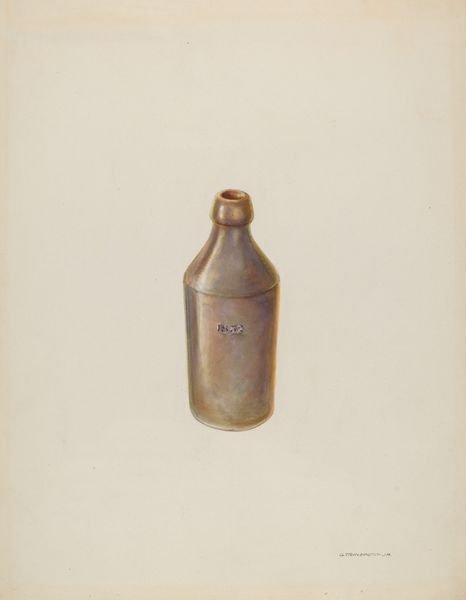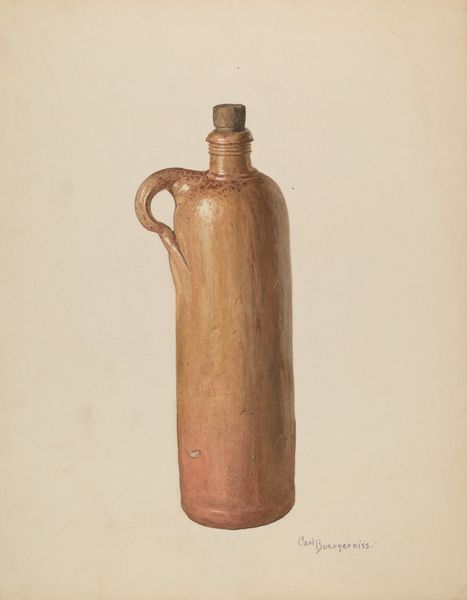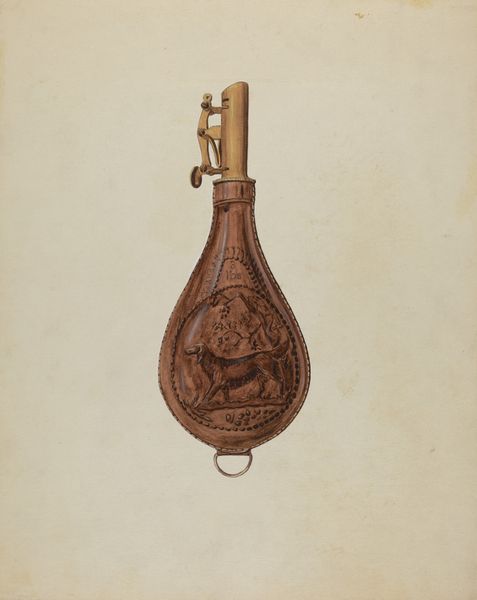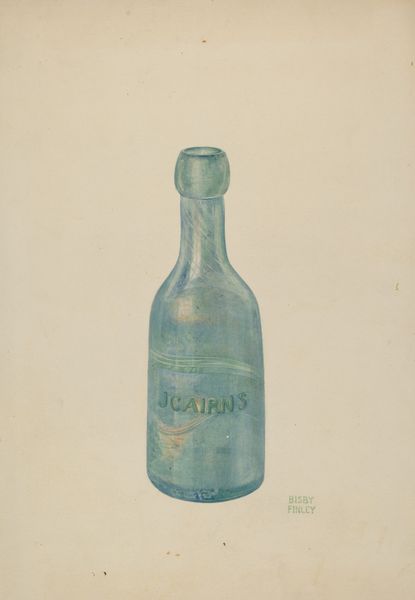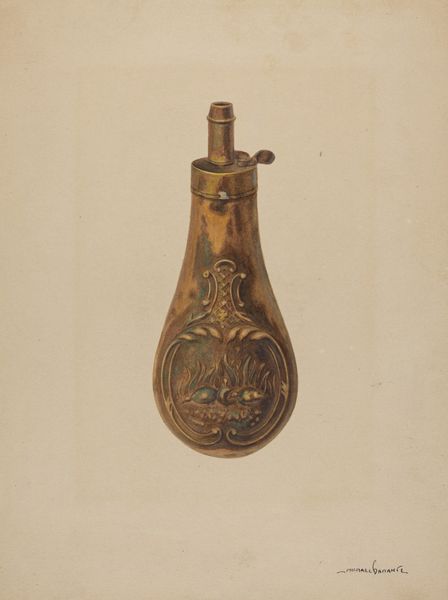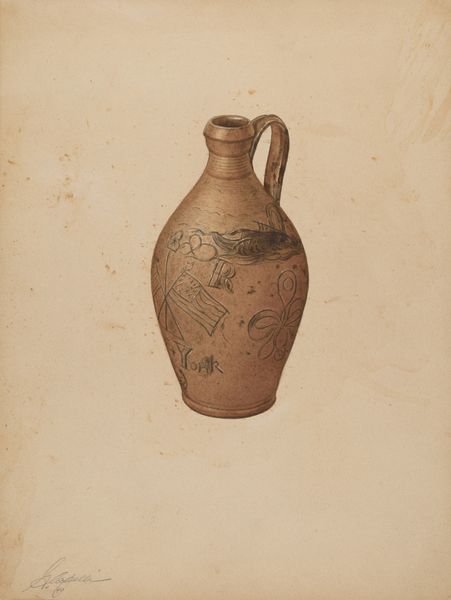
drawing, painting, watercolor
#
drawing
#
painting
#
watercolor
#
watercolour illustration
#
watercolor
#
realism
Dimensions: overall: 35.7 x 24.6 cm (14 1/16 x 9 11/16 in.)
Copyright: National Gallery of Art: CC0 1.0
Curator: The image before us is titled "Weiss Beer Bottle," dating back to 1939, a work rendered in watercolor and drawing. The artist, Herman O. Stroh, has captured the humble object with surprising detail. It is a surprisingly large format for such a common item, wouldn’t you say? Editor: I’d agree. My initial feeling is of the austerity of the object, though its angular form almost hints at Art Deco. I can imagine this label standing out on the shelf of a 1930s Milwaukee grocer. It's oddly compelling, despite the limited palette. It’s so…brown! Curator: Consider the timing – 1939. The looming shadow of World War II, a time of uncertainty. A seemingly simple depiction like this becomes layered. Beer, and breweries, specifically, were gendered spaces, too, dominated by men. Do you think this fits within that context? Editor: Definitely. This object is presented, quite plainly and starkly: a simple bottle becomes a representation of that culture, or even nostalgia for a simpler life, considering that we understand this piece in light of those historic circumstances you introduced. Even the bottle’s label– “pure weight”, feels meaningful somehow. It seems very “Germanic”, stoic and bold in its straightforward presentation of what you get in the bottle. I notice that string around the neck, it seems hand-tied, as well, not unlike how men might knot their neckties. The ritual involved has an iconic character to it. Curator: Absolutely. Furthermore, German identity was greatly questioned and persecuted in the years surrounding WWII. This raises crucial questions of how nationalism, immigration, and war impacted ordinary life and cultural production right here at home. Stroh, who also designed several buildings for the brewery, clearly positions himself with a sense of pride in German heritage. Editor: Yes, and I am also intrigued by the way he's elevated this everyday object with this technique; by emphasizing the label and the materiality of the glass, for example. The transparency suggested by the medium lends it a visual weight, a feeling that it's simultaneously fragile and resilient. Curator: Indeed, and analyzing Stroh’s beer bottle allows us to grapple with identity formation in America during this turbulent period and confront more generalized concerns with authenticity, craft, and commodity. It also calls us to confront a lot of painful historical narratives. Editor: Precisely. On the surface, a simple beer bottle, but below it lies complex meanings. A fascinating testament to the power of symbolic imagery!
Comments
No comments
Be the first to comment and join the conversation on the ultimate creative platform.
